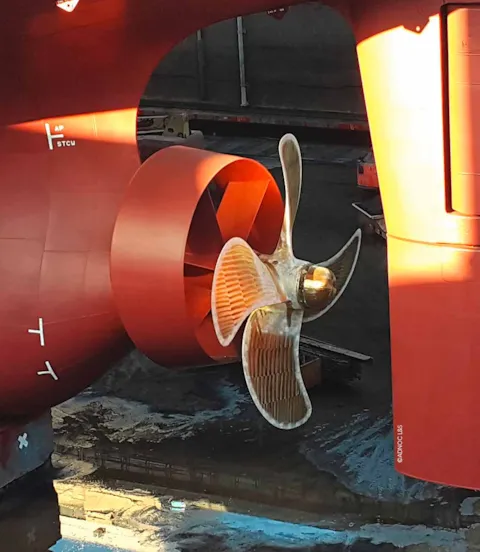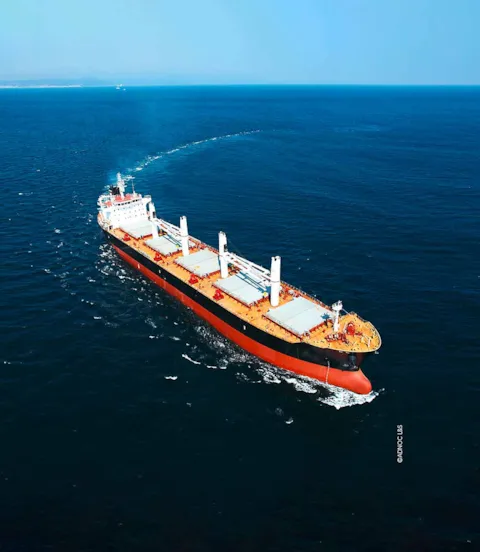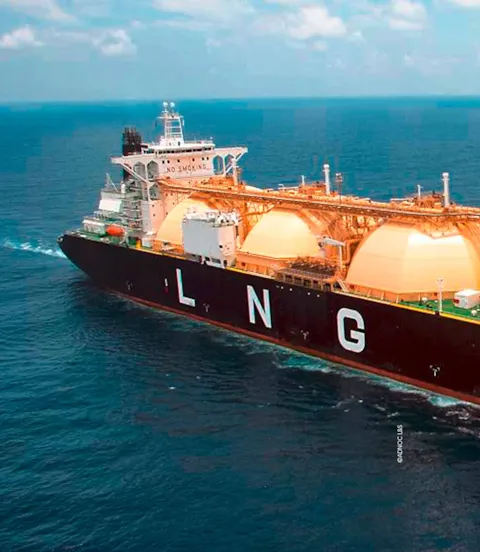Energy efficiency – results beat expectations
For many years DNV has been providing advisory services to shipping companies to help them build a sustainable culture focused on energy efficiency and performance management. Abu Dhabi’s ADNOC Logistics & Services achieved an impressive 23 per cent of cost savings.
It has been a difficult decade for nearly all segments of the shipping industry. A weakening global trade volume and intense competition in the wake of the financial crisis, soaring bunker prices, an increasingly complex regulatory landscape, and public scrutiny of the logistic sector’s ecological footprint forced shipping companies around the globe to review their ways of doing business.

The Al Daffah project
“In 2011 we identified fuel as one of our major operating costs and began looking at ways to make our seagoing fleet more efficient,” recalls Captain Mohammed Al Ali, Senior Vice President, Ship Management at ADNOC Logistics & Services (ADNOC L&S), the marine and logistics subsidiary of the Abu Dhabi National Oil Company (ADNOC). “After some discussions we realized we needed a comprehensive approach, an overall strategy encompassing all operations.”
This was the beginning of ADNOC L&S Al Daffah Energy Efficiency Project. DNV GL has provided advisory services to well over one hundred clients over the years and uses a proven, best-practices approach to designing and implementing energy optimization and performance management strategies, explains Benjamin Dineshkar, Head of Shipping Advisory, Maritime Advisory South East Europe, Middle East & Africa at DNV GL – Maritime.
A key element of DNV GL’s advisory service is an initial energy efficiency assessment which specifies the potential energy savings for individual cost items in six focus areas: voyage performance, ship performance, fuel management, engines, energy consumers on board, and management and organization. DNV GL started reviewing energy management in ADNOC L&S practices and systems. Based on the assessment, DNV GL assisted ADNOC L&S in developing effective measures to save costs in each of these six areas. All in all DNV GL predicted a potential fuel saving opportunity of 21 per cent for the fleet of 27 seagoing vessels.
“We set up a five-year strategic plan, beginning at the end of 2012, including various milestones and subdivided into three phases,” explains Captain Al Ali. “Then we appointed a project team, selecting our best engineers.”

Culture a key factor
The leaders at ADNOC L&S knew that an endeavour of this magnitude could not be tackled half-heartedly. "With continuous communication and well applied change management, people understood the value of the project", says Captain Al Ali.
Over six months ADNOC L&S implemented smaller initiatives with minimum investments but a big impact to deliver quick results: fuel quality management, autopilot settings, voyage budgeting, propeller polishing or fuel-saving speed settings.
A second phase ran for twelve months and primarily addressed longer-term changes, such as establishing roles and responsibilities as well as boiler plant maintenance routines. ADNOC L&S also introduced a software-based performance management system that automates many processes. Sensors were installed on board the ships to feed operational data into the software automatically, which compiles reports and sends them to shore. In addition, ADNOC L&S set up a standardized training programme for employees. All these measures today form the operational backbone of the company’s energy efficiency culture.
Today the ongoing phase three - includes the more capital-intensive measures on the company’s younger vessels, i.e. retrofits such as new propellers, propeller boss caps, Becker Mewis Ducts or hull coatings where appropriate.“DNV GL’s partnership approach with ADNOC L&S to develop the way-forward implementation plan and prioritize the initiatives for implementation yielded in significant savings,” says Benjamin Dineshar.

Being prepared for the unexpected
The market is very volatile, Captain Al Ali continues, so one cannot stick to a one-dimensional strategy. “A few years into the project oil prices crashed. This affected the payback period of our measures and was a big challenge. So we revised our plan and temporarily focused on measures with short payback periods. We overcame all these factors by keeping the project flexible and adapting to changing circumstances.” When the gas tanker charter market was really low, ADNOC L&S adopted a slow-steaming strategy, which resulted in major fuel savings for the fleet. To ensure timely delivery of the gas they chartered an additional vessel. “Our own, optimized ships outperformed the chartered ship in terms of fuel efficiency,” says Captain Al Ali. “People tend to underestimate how much fuel is wasted as a result of steam leaks and other small issues with boilers.”

Maintaining the spirit
At the conclusion of the five-year project in 2017 came the big surprise: ADNOC L&S had actually surpassed DNV GL’s cost-saving prediction. “We lowered our costs by 23 per cent compared to the 2012 baseline, two per cent more than calculated,” says Al Ali. ADNOC L&S had invested 50 million US dollars and walked away with a total return on investment of 111 million US dollars. What is more, by reducing fuel consumption by 325,000 tonnes, ADNOC L&S lowered its CO2 emissions by one million tonnes. These results were celebrated by the entire staff.
The journey continues, says Al Ali: “Of course we will implement what we have learned on future newbuilds, cooperating with classification and the shipyards to explore new opportunities regarding energy efficiency.” The culture of constant energy efficiency vigilance and embracing change must be kept alive, he stresses – through mandatory awareness training and certification programmes as well as energy efficiency specialists who continuously monitor the performance of the organization, addressing issues and keeping everybody on track.
Highly satisfied with the success of the energy efficiency project for the seagoing fleet of 27 ships, ADNOC L&S decided to launch a similar project for its local fleet of 95 offshore and marine service vessels, again supported by DNV GL. The preliminary assessment was completed in 2018, and implementation of the plan will begin in 2020. DNV GL sees a saving potential of twelve per cent for this fleet with its highly dynamic, short-distance operating pattern.
“The Al Daffah project has shown that DNV GL’s advice is both practical and implementable, and that great partnership can achieve impressive results,” concludes Benjamin Dineshkar. “Nobody can make this journey alone – we are here to contribute our specific know-how, enabling shipping companies to excel in energy efficiency management.”

- ADNOC L&S